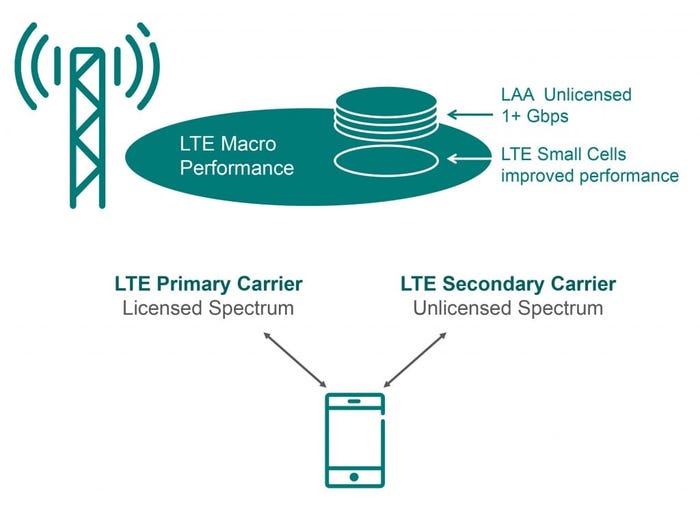Ericsson has conducted live License Assisted Access (LAA) tests at its labs in Canada and Sweden, claiming to have demonstrated to operators Verizon, SK Telecom and T-Mobile US a peak rate of 450 Mbps. The LTE technology, which is also known as LTE-U, gives users mobile access to unlicensed frequencies, often used by wifi, to enhance coverage.
February 10, 2015

Ericsson has conducted live License Assisted Access (LAA) tests at its labs in Canada and Sweden, claiming to have demonstrated to operators Verizon, SK Telecom and T-Mobile US a peak rate of 450 Mbps. The LTE technology, which is also known as LTE-U, gives users mobile access to unlicensed frequencies, often used by wifi, to enhance coverage.
Working with chip giant Qualcomm, Ericsson said the tests were done by using a combination of 20 MHz on licensed and 40 MHz on 5 GHz unlicensed spectrum on small cells. The firm claimed LAA follows a ‘fair-sharing’ principle as both wifi and LTE-U users will have equal access to the other.
The Swedish infrastructure vendor said starting in Q4 2015, LAA will be added to its indoor small-cell portfolio covering the Ericsson RBS Indoor Picocell and Radio Dot System. “Carrier Aggregation was an important technology trend for mobile networks in 2014 and LAA is already set to be a key focus for mobile operators in 2015, Thomas Norén, VP and Head of Radio Product Management at Ericsson, said.
“Innovations like LAA that improve the user experience while increasing spectrum efficiency will be significant milestones that mobile industry leaders must both drive and support.”
Neville Meijers, VP at Qualcomm Technologies said: “Qualcomm Technologies shares Ericsson’s commitment to delivering ground-breaking technologies that could have a dramatic impact on mobile user experiences. “Our cooperation on delivering this live LTE-U demonstration for leading mobile operators around the world is just the latest of many industry innovations where Qualcomm Technologies and Ericsson have driven the interoperability efforts that are critical to commercialization.”
The kit maker claimed LAA is already being considered by the four operators for implementation. Ed Chan, SVP, Network Planning at Verizon, said: “Verizon is committed to researching and adopting new technologies that will consistently improve the performance of our network and ultimately the experience we deliver to our customers. We are encouraged by the headway that Ericsson and Qualcomm Technologies have made in demonstrating the benefits LAA can provide.”
First announcing the technology last month, Ericsson was keen to stress it is a key milestone on the road to 5G. SK Telecom seemed to agree. “SK Telecom is very active in the development of 5G technologies, which will be an extension and evolution of our LTE network,” Park Jin-hyo, Senior Vice President and Head of Network Technology R&D Center, SK Telecom, said.
“We are delighted to achieve the successful trial of the 450Mbps LAA and fair-sharing technology with Ericsson and Qualcomm Technologies and will continue to work closely with them to secure advanced network technologies.”
Ericsson’s argument for LAA’s suitability for 5G is based on its use of higher frequencies on small-cell architectures and the aggregation of licensed and unlicensed bands, which the vendor claim are key focus areas for the next generation technology. The company said these will become increasingly important as operators evolve their LTE networks as demand for mobile broadband from subscribers and connected devices grows.

About the Author(s)
You May Also Like








.png?width=300&auto=webp&quality=80&disable=upscale)


_1.jpg?width=300&auto=webp&quality=80&disable=upscale)


.png?width=800&auto=webp&quality=80&disable=upscale)